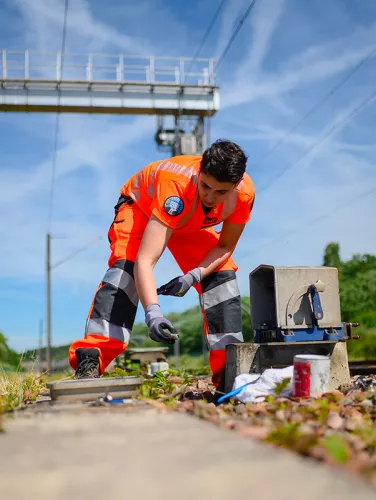Our tools and organisations are constantly evolving to improve the performance of network operation and maintenance.
Modernising and standardising our operating systems should make it possible to increase train regularity and frequency.
A dedicated supply chain department manages nearly 7,000 agents and partners, to ensure optimised logistics for all our worksites.
Network monitoring is based on new technologies, with data received in real time, enabling us to move from corrective maintenance to predictive maintenance.

